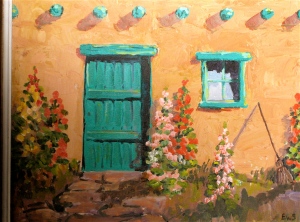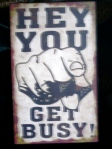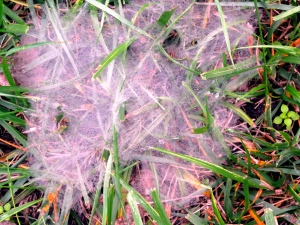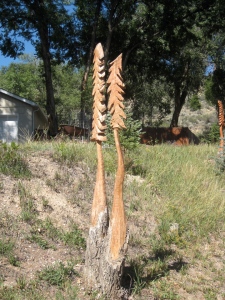When I visited my parents in Kansas during my dad’s last years with Alzheimer’s, I always took my mother out for a ride. Sometimes we shopped for special foods or things they needed. Other times we just started driving to see where the road took us.
We both loved houses. Not big fancy houses, but regular family houses, or old rambling houses. And we especially liked doors. As years went by and Mom started showing serious signs of dementia, I created the “Guess what’s behind the door” game. Here’s how it worked.
I’d drive along a street or around a neighborhood, and Mom was supposed to be looking for a house door that caught her attention. Sometimes I had to remind her what she was looking for; other times she’d get excited and say, “There! That one!”
I’d slow down and we’d both take a good look at the door she’d chosen. Then I’d give her a prompt and say: “When you open that door and go inside, what is the first thing you see?” (or hear? ~ or smell? ~ or feel? -~ or even taste?) Then as we drove on, we’d create a story based on how she answered the question. And always–always!–after we played this game, she was hungry and wanted an ice cream cone. (Thinking is hard work, you know.)
Through the years I’ve learned that Alzheimer’s and dementia closes many mental doors, but sometimes I can put my foot in the way before a door closes completely, and I can connect a memory or an idea with my mother. As Flora Whittemore (1890-1993) wrote: “The doors we open and close each day decide the lives we live.” There is probably no truer statement for those who suffer with Alzheimer’s or dementia…and also for the rest of us, too.
Try the door game. Choose one of the doors on this post and imagine opening it. Create a first response for each of the senses. Your answers will lead you to a story genre–horror or romance or mystery or sci-fi or adventure, etc.–and even if you don’t want to write anything, your creative juices will be flowing! Or maybe you’ll be like my mother and just crave an ice cream cone. And that’s okay, too.
In addition to Flora Whittemore’s wise words, here are some of my other favorites about DOORS:
“Sometimes you don’t know when you’re taking the first step through a door until you’re already inside.” ~ Ann Voskamp, author of ONE THOUSAND GIFTS
“Every now and then one paints a picture that seems to have opened a door and serves as a stepping stone to other things.” ~ Artist Pablo Picasso
And from Dejan Stojanovic, poet and journalist from Kosovo: “He tries to find the exit from himself, but there is no door.”



























